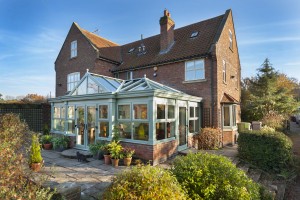Royal Orangeries
Although the primary function of orangeries is to shelter and protect delicate citrus trees from the cold, they have always been considered far more than just elaborate ‘greenhouses’. The construction of orangeries became fashionable in the mid 17th Century, when orange, lemons trees and other exotic fruits such as bananas and pomegranates were favoured by nobility and royalty. Oranges symbolised wealth and prestige among the nobles as they believed they gave them ‘princely virtues’.
 Here’s a look at how orangeries were originally built and why they were favoured by European Queens.
Here’s a look at how orangeries were originally built and why they were favoured by European Queens.
Construction
Orangeries were erected with a south-facing aspect to take most advantage of the afternoon sun. Floor to ceiling windows were installed to get maximum sunlight. The north aspect was windowless and constructed in heavy brick to keep the warmth in as much as possible. Brick and stone bases were supported by stone pillars and the ceiling was adorned with a cupola ‘roof lantern’ to let in natural light.
Straw was used for insulating and many orangeries had additional wooden shutters to keep the rooms warmer.
Orangeries today are still constructed using brick and stone, while modern insulating materials such as double glazing are used for better energy efficiency.
Kensington Palace Orangery
The Orangery at Kensington Palace is one of the finest examples in England. Surrounded by the splendid, formal palace gardens, it was built in 1704 for Queen Anne to protect her delicate citrus trees from harsh winter frosts.
The beauty of the baroque building, featuring interior carvings by Grinling Gibbs, and the eloquent surroundings made it the perfect setting for entertaining. Sumptuous dinners were held in the orangery and underground heating helped keep the courtiers comfortable while they tucked into a series of extravagant courses.
Versailles Orangery
Constructed between 1684 and 1686, the orangery in the grounds of Versailles is one of the largest in Europe. The south-facing central gallery is 150 metres long and features large, arched windows. It housed thousands of orange trees which were then placed outside in the warmer months. Even today, some of the trees featured are over 200 years old.
Considered a symbol of wealth and prestige, the orangery was also used for courtly feasts and banquets. Queen Marie Antoinette’s favourite perfumes were made with orange blossoms and lemons, so the heady, sweet scents of the orangery must have been particularly welcoming, helping to mask the foul stench that surrounded Versailles.
Ace Glass Southern Brighton offers a range of stunning orangeries that are fit for a queen. Contact us today for more information.


